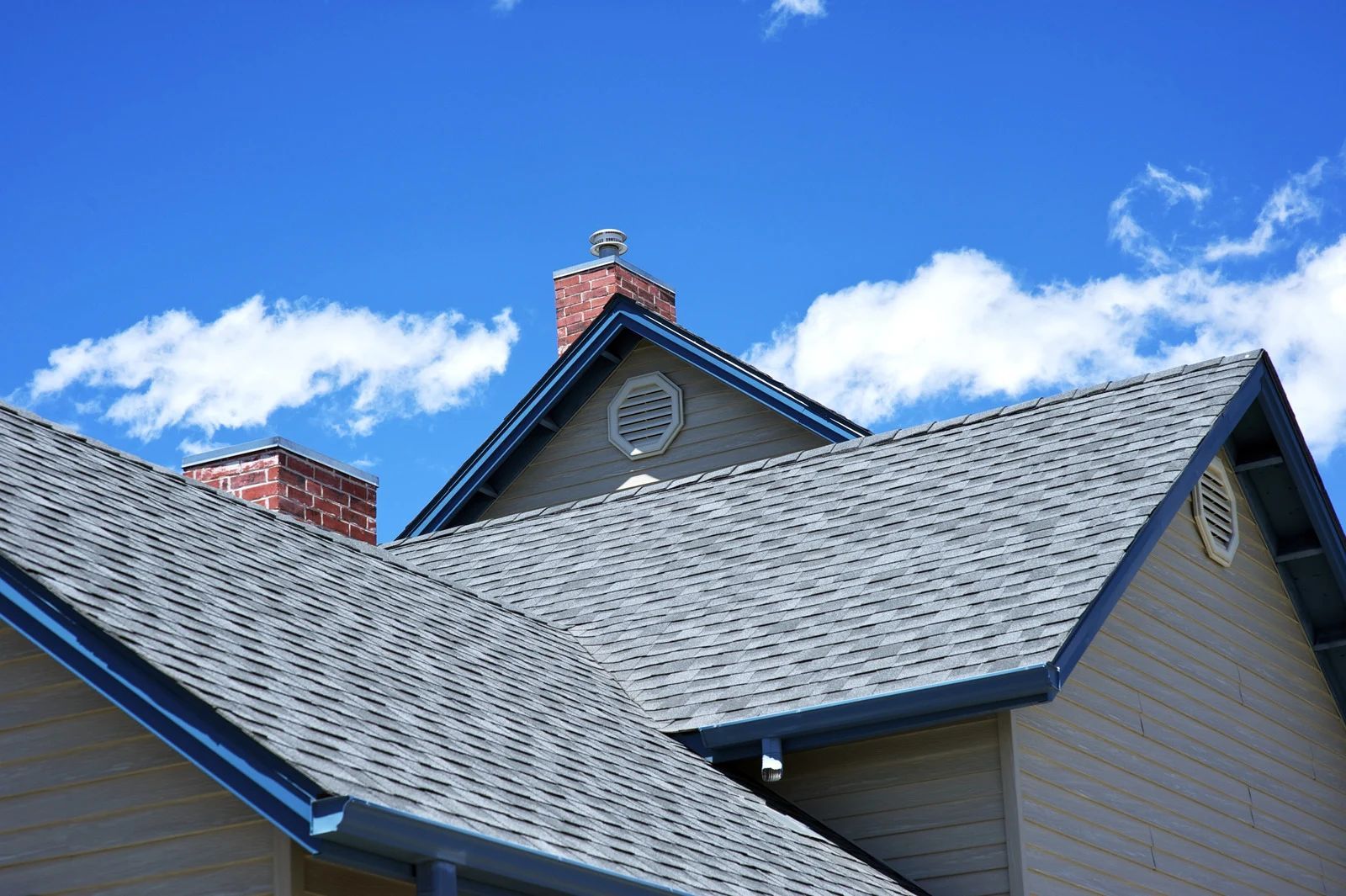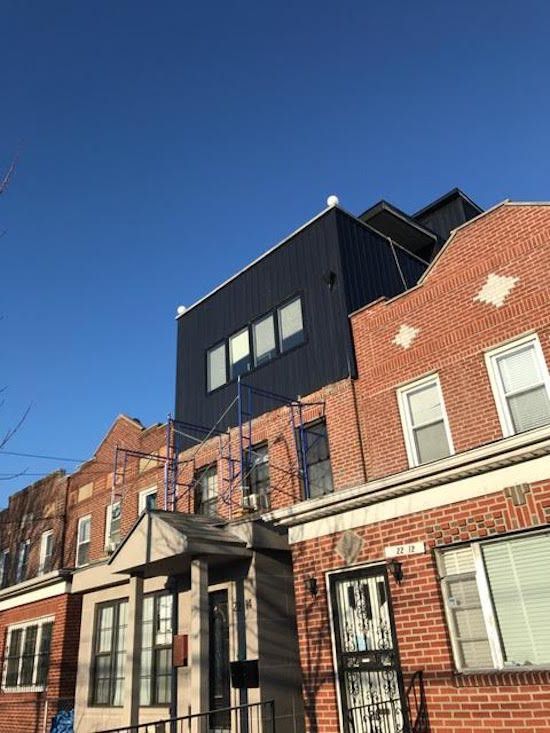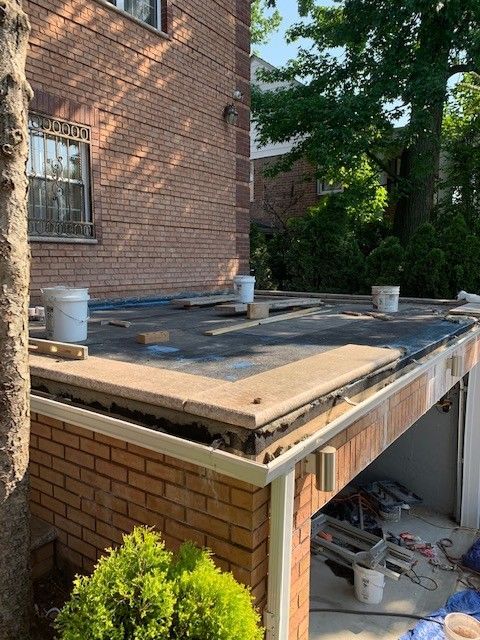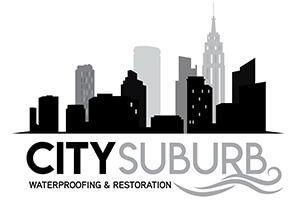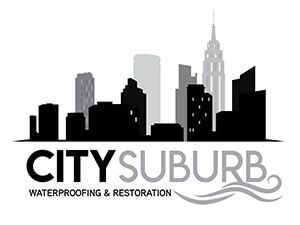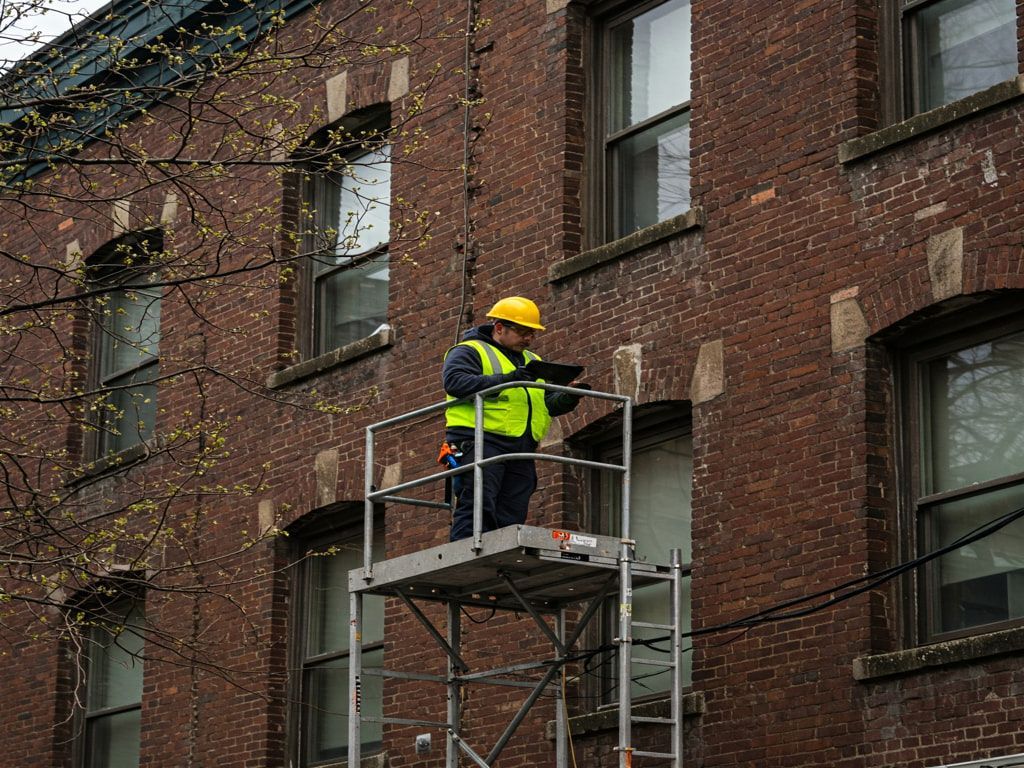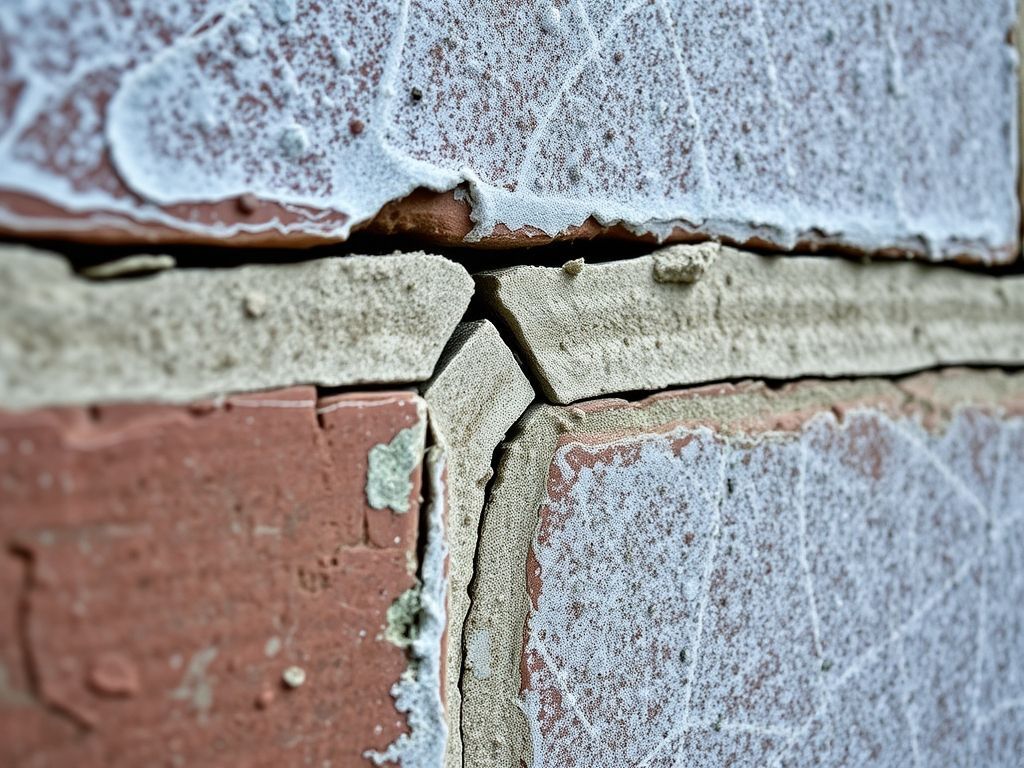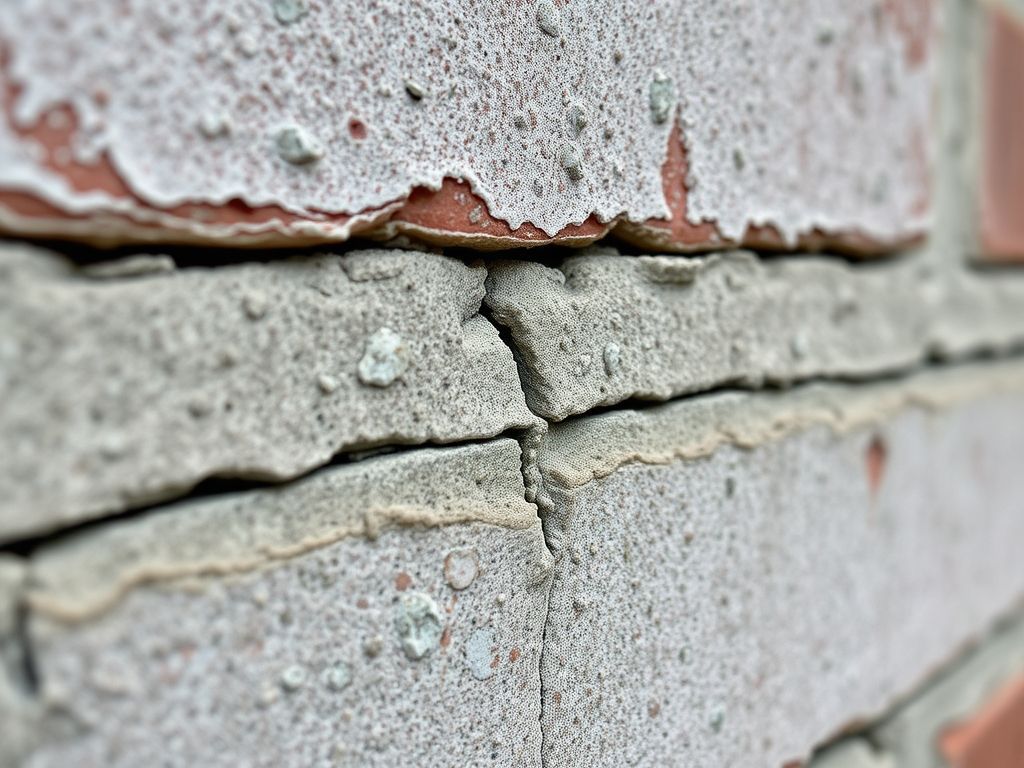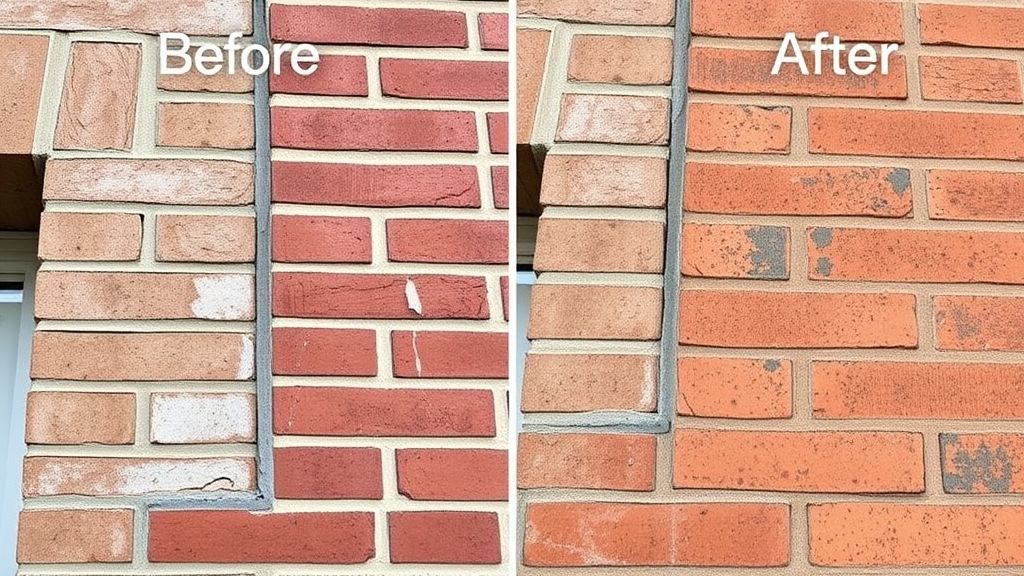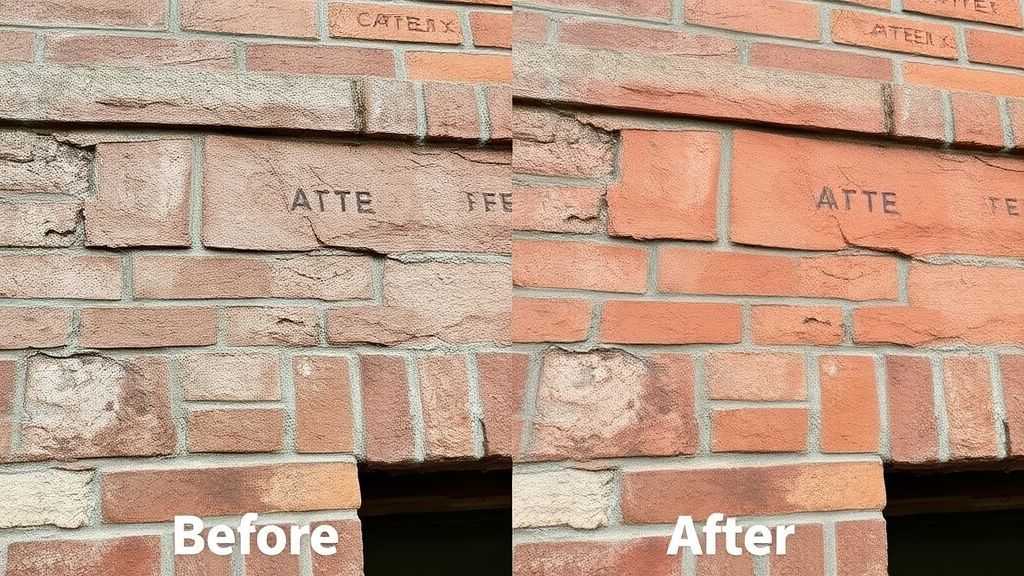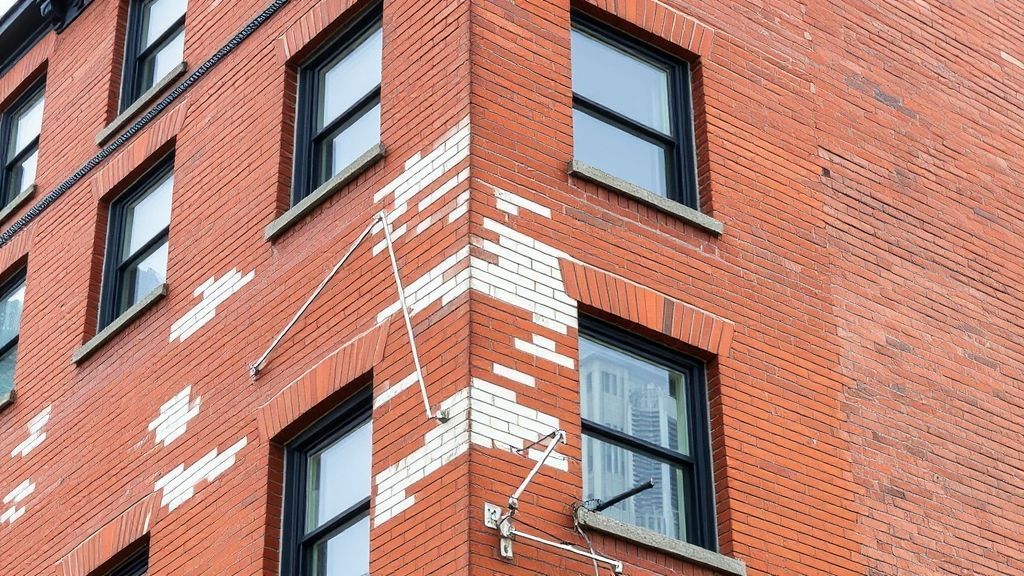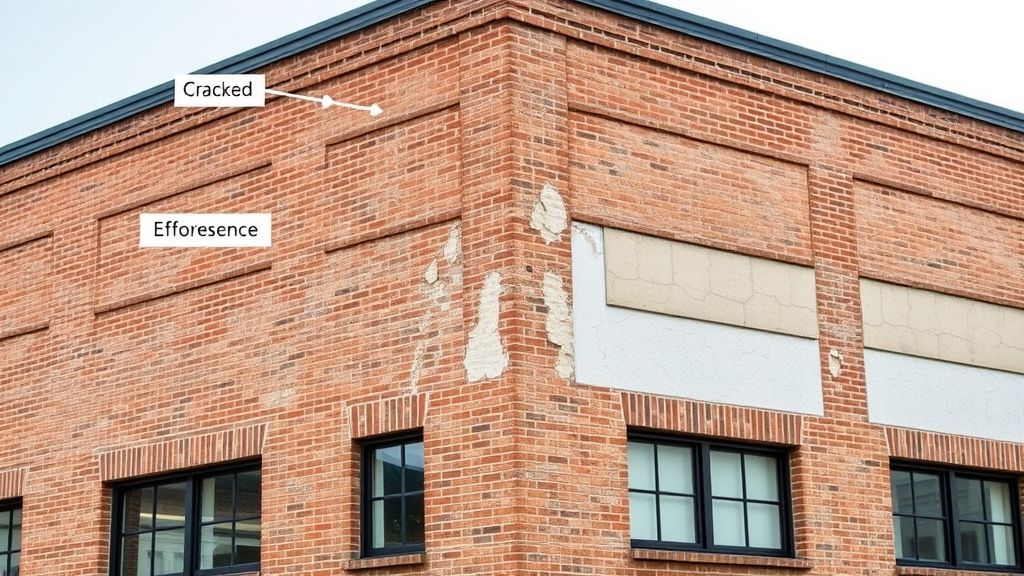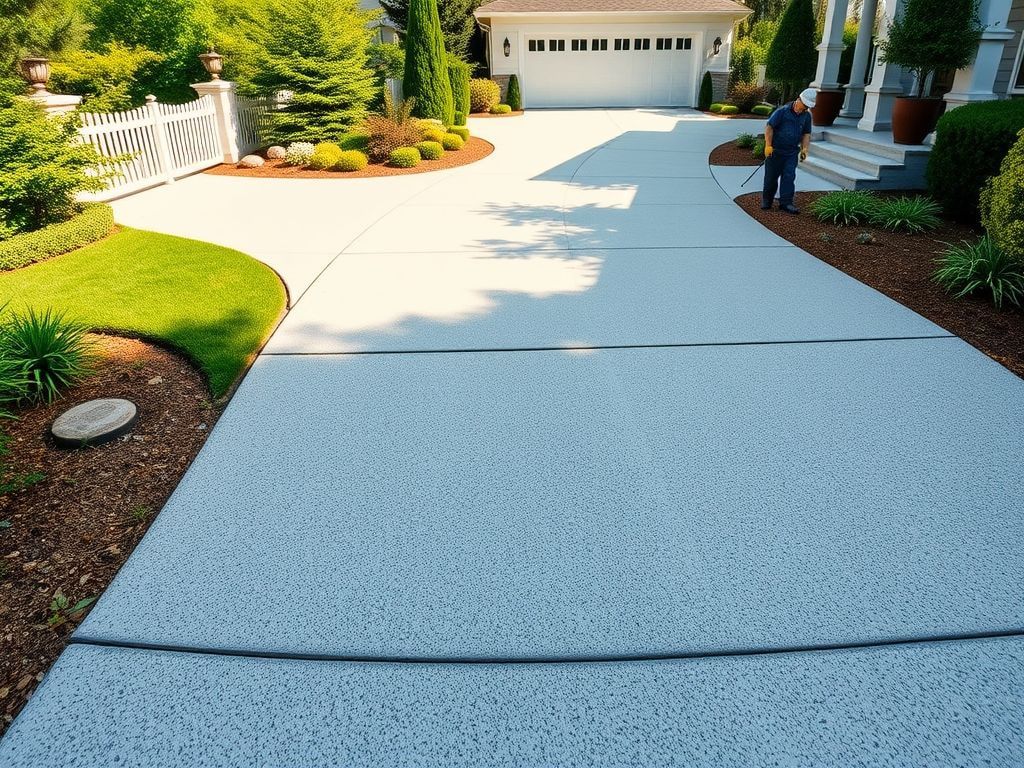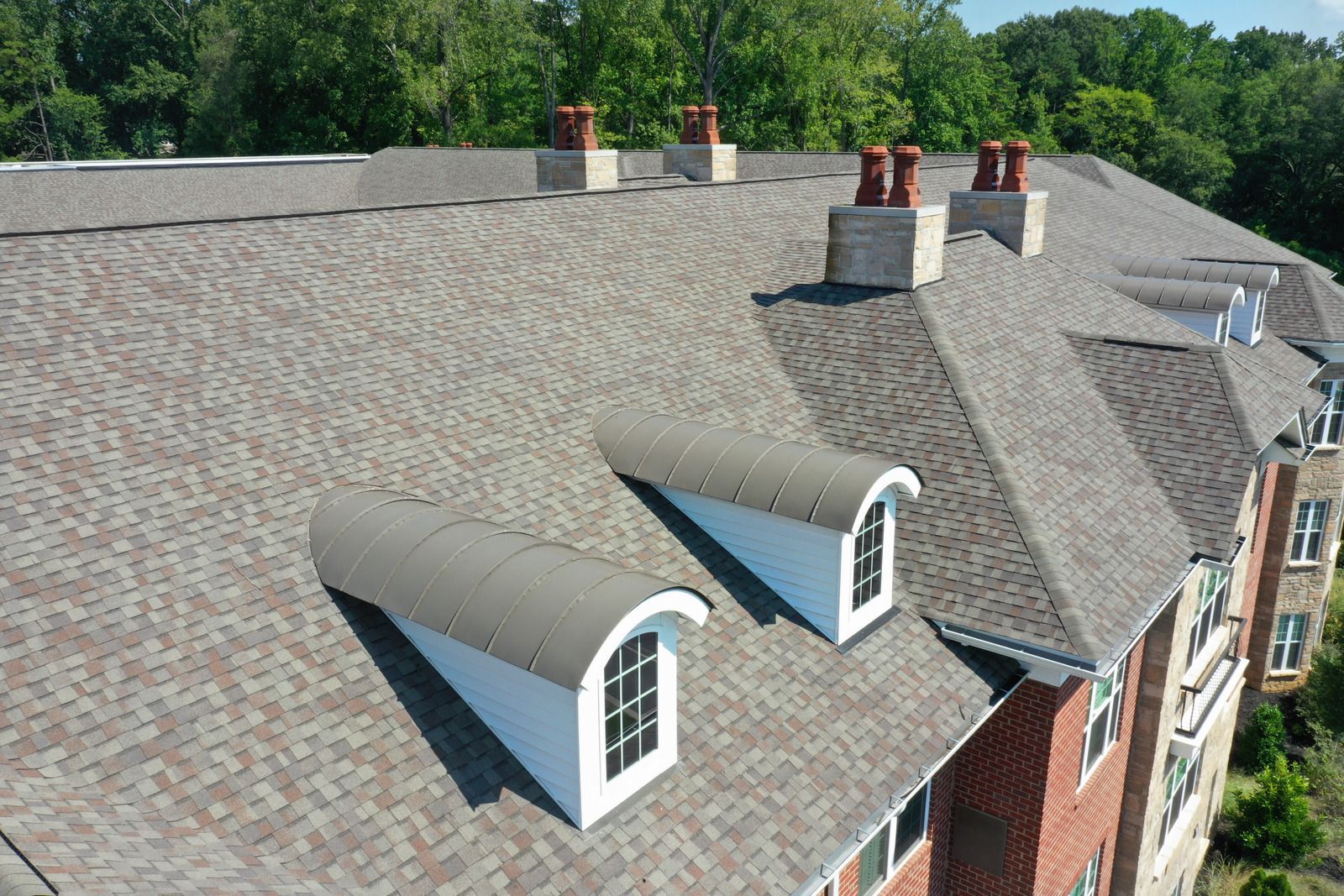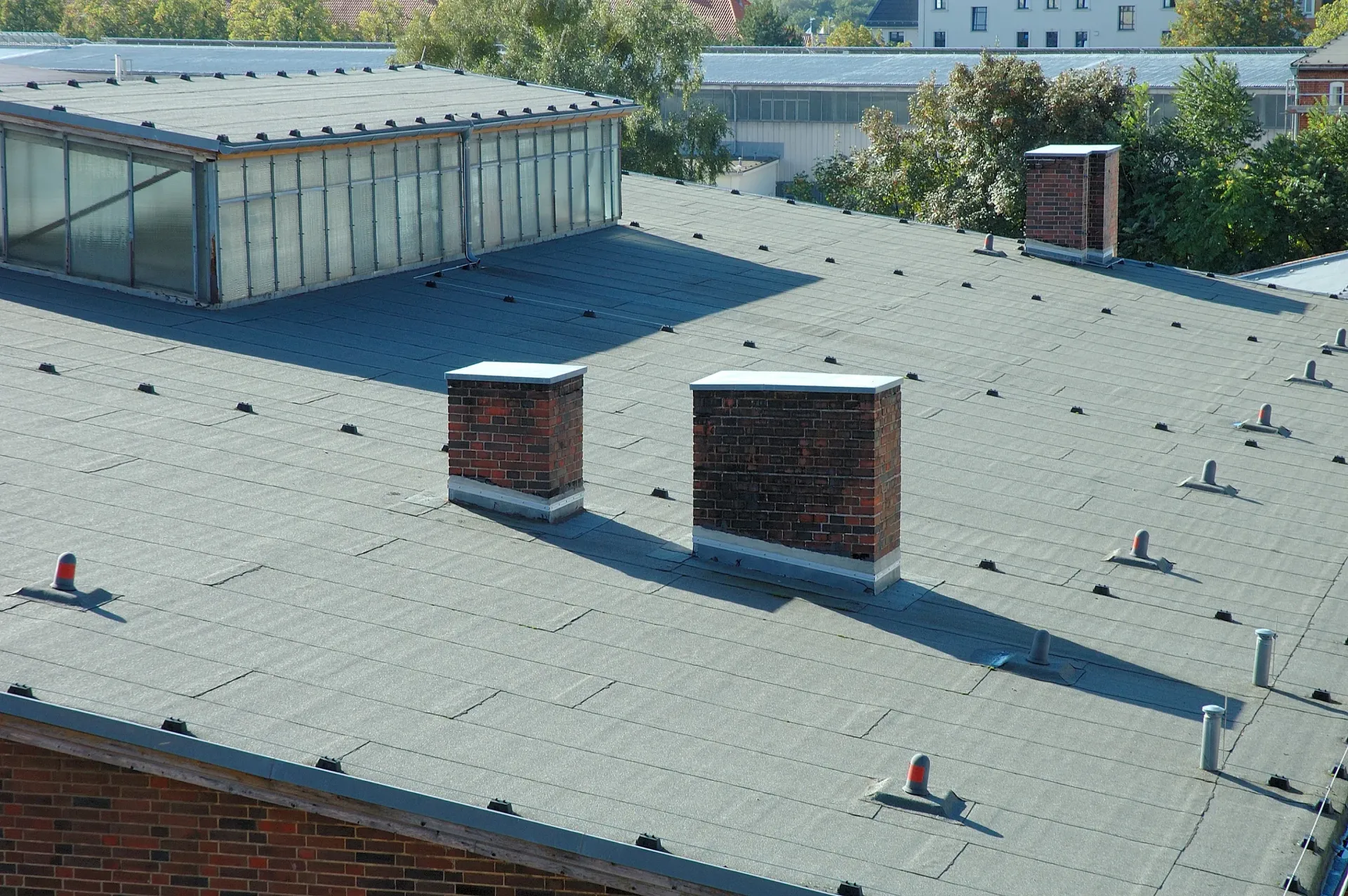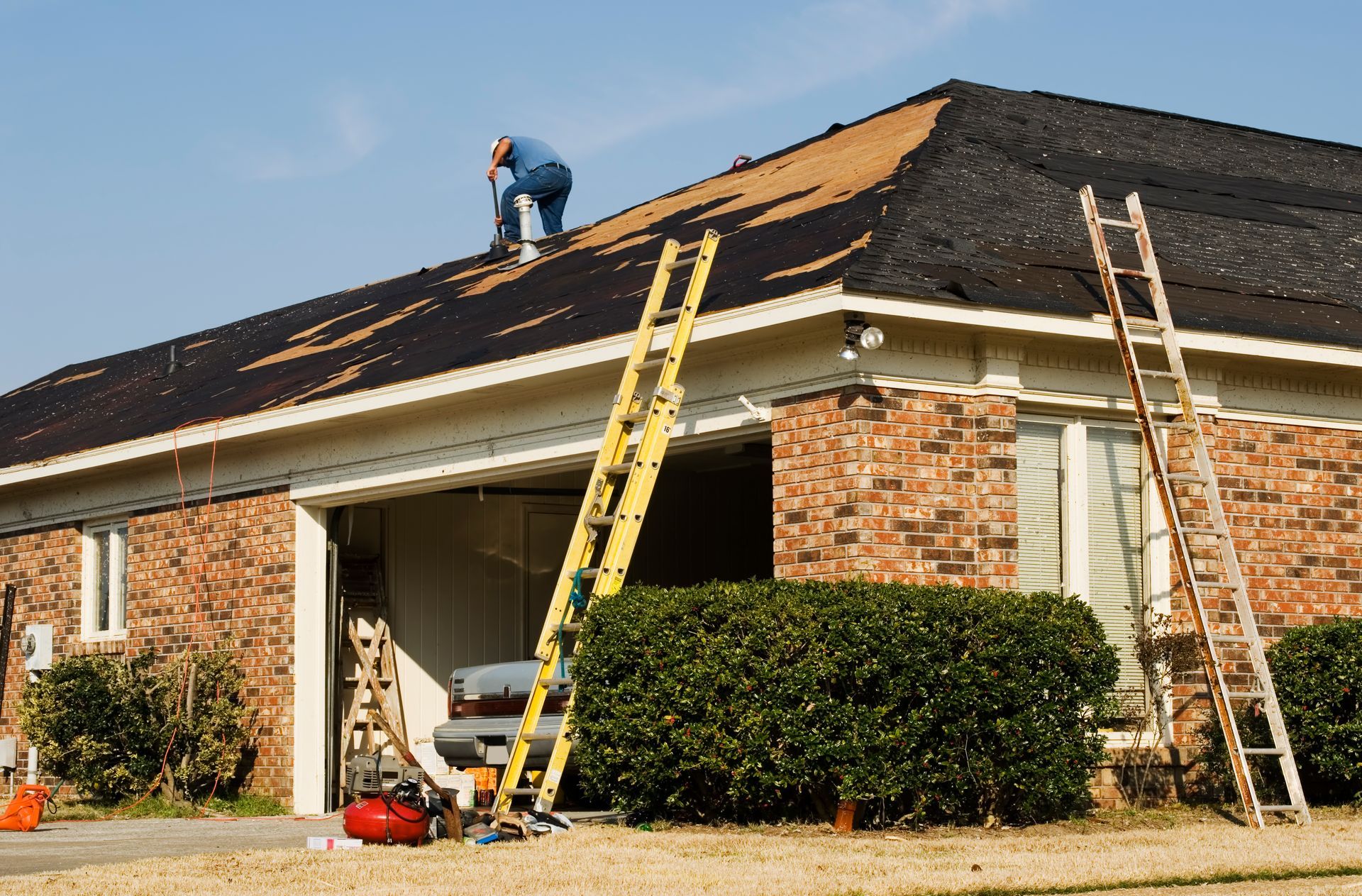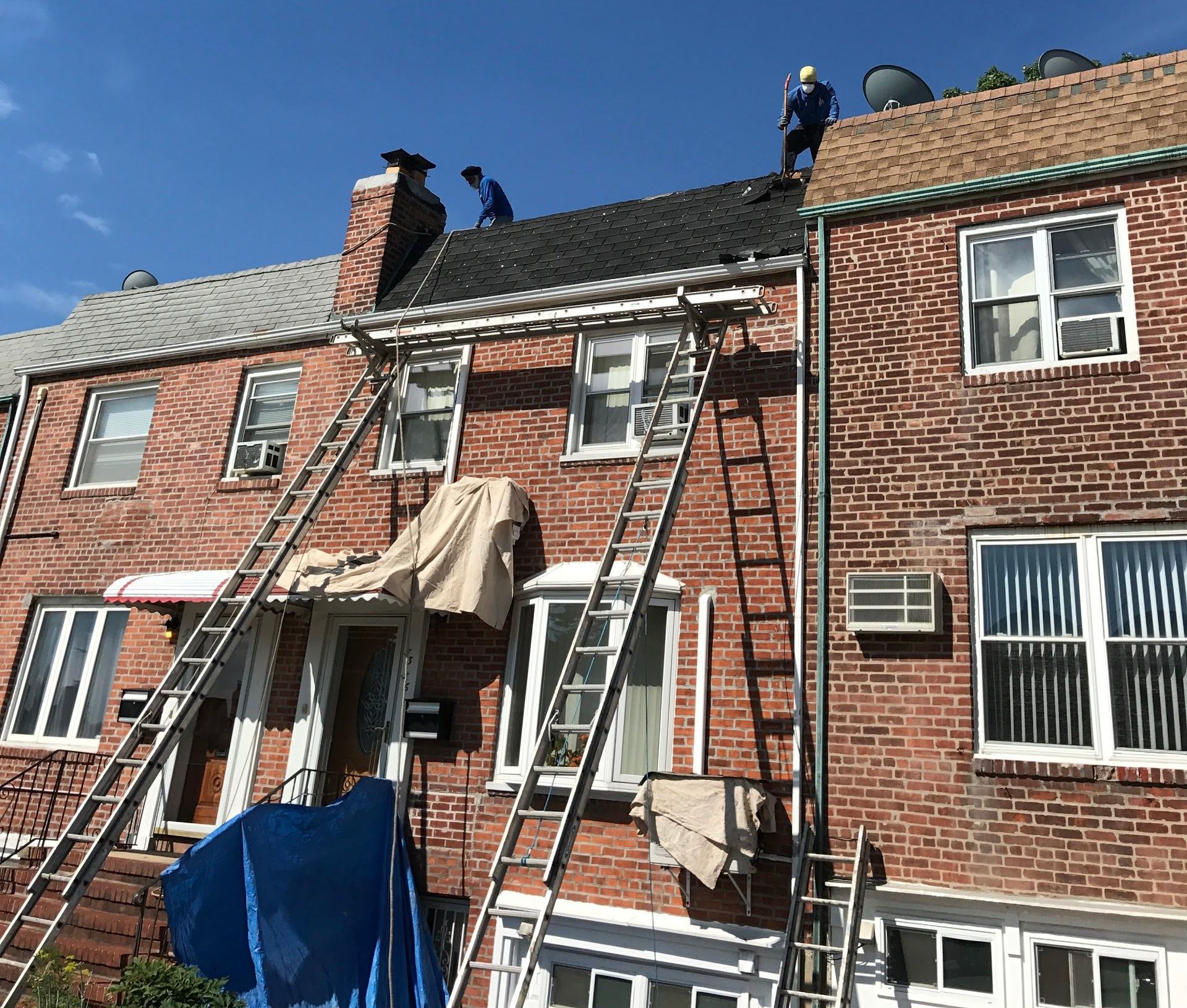Documentation and Monitoring Systems for Brick Pointing Maintenance: Ensuring Consistent Care
Key Takeaways:
- Strategic Documentation as an Asset: Documentation systems for brick pointing transform maintenance from a reactive emergency response to proactive asset management, optimizing budgets and extending masonry lifespans while preserving institutional knowledge despite staff changes.
- Essential System Components: Effective brick pointing documentation requires standardized condition assessments, visual documentation with consistent photography standards, detailed maintenance records including materials used, and contractor performance history.
- Systematic Monitoring Protocols: Building a monitoring program involves establishing appropriate inspection frequencies based on environmental factors, creating visual reference standards, implementing consistent measurement methodologies, and setting clear trigger points for maintenance intervention.
- Technology Integration Benefits: Digital platforms, mobile inspection applications, and potentially BIM integration significantly enhance documentation efficiency, reduce administrative time, and improve information accessibility compared to traditional paper-based systems.
These systems create organizational knowledge that persists through personnel transitions, providing critical information about building performance and maintenance approaches that would otherwise be lost when staff changes occur.
In the Bronx's diverse architectural landscape, building maintenance professionals face a common challenge: creating systems that effectively track and document brick pointing conditions over time. Without robust documentation, buildings suffer from inconsistent maintenance, leading to premature deterioration, unexpected costs, and shortened lifespans of masonry structures. This issue becomes particularly acute when property management teams change, taking institutional knowledge with them.
For property managers, maintenance directors, and building owners juggling multiple responsibilities, establishing consistent documentation practices often falls to the bottom of priority lists – until emergency repairs highlight the gap. But what if documentation systems could transform from administrative burden to strategic asset? What if the right monitoring protocols could extend maintenance intervals and significantly reduce emergency repairs?
This article explores how property professionals can develop effective documentation and monitoring systems for brick pointing maintenance that protect building assets, optimize maintenance budgets, and create valuable organizational knowledge that persists despite staff changes.
The Critical Role of Documentation in Brick Pointing Maintenance
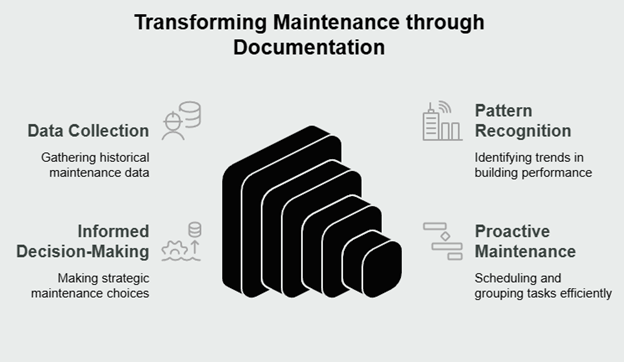
Documentation serves as much more than simple record-keeping for brick pointing maintenance. When developed strategically, these systems become valuable assets that fundamentally transform maintenance approaches from reactive to proactive.
Many Bronx property managers discover the true cost of poor documentation only after addressing the same deterioration problems repeatedly. Without comprehensive records, maintenance teams often lack critical historical context: when was the last pointing work performed? What specific materials were used? Which areas have shown faster deterioration? This information vacuum leads to repeated work, inconsistent approaches, and ultimately, accelerated building deterioration.
Throughout years of consulting with property management teams, organizations with robust documentation systems typically make more informed decisions about maintenance timing and approach. Their records create clear patterns of building performance that guide resource allocation and help justify preventative maintenance investments – which can be challenging budget items to defend in some organizations.
Well-documented brick pointing information provides the foundation for maintenance strategies that optimize building performance while controlling costs. Rather than reacting to emergent problems, property managers can anticipate needs, schedule work during optimal seasons, and group maintenance activities for greater efficiency.
Essential Components of an Effective Brick Pointing Documentation System
Building a comprehensive documentation system requires more than simple work orders or maintenance logs. Effective systems incorporate several key components that collectively create a complete picture of building envelope condition and maintenance history.
Standardized condition assessment protocols form the cornerstone of useful documentation. These protocols establish consistent evaluation methods that remain reliable despite changes in personnel. When implementing such protocols in the Bronx's varied building stock, successful organizations develop rating scales for mortar condition, specify observation points, and create assessment frequencies tailored to building exposure conditions.
Visual documentation provides another essential component, capturing conditions in ways that written descriptions alone cannot. Establishing standards for photographic documentation helps ensure images remain comparable over time. This includes consistent angles, lighting conditions when possible, and reference points or measurement tools in images to establish scale.
Detailed maintenance activity records document all pointing work performed, including scope, locations, materials, techniques, and contractor information. The most effective systems include materials documentation that preserves information about mortar composition, matching details, and suppliers – information often desperately needed during subsequent maintenance cycles.
Contractor qualification and work quality records round out comprehensive systems, documenting performance history, warranty information, and quality assessments. These records prove invaluable when selecting contractors for future work.
Building a Systematic Monitoring Program for Brick Pointing
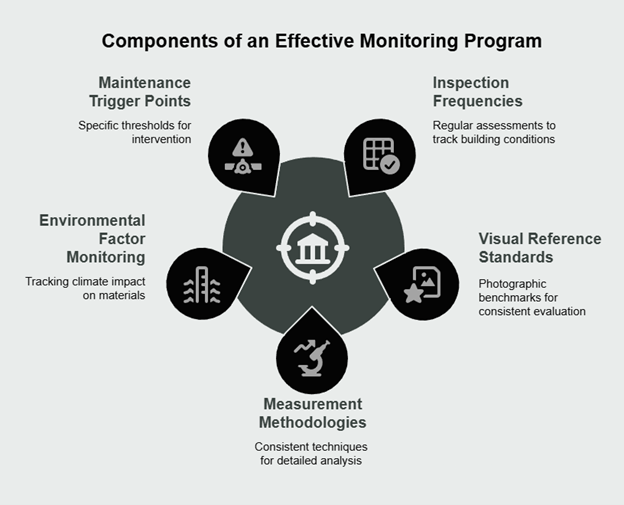
While documentation captures historical information, monitoring programs actively track building conditions over time, enabling early intervention before deterioration advances to critical stages. Effective monitoring programs for brick pointing maintenance combine structured inspection schedules with consistent assessment methodologies.
Establishing appropriate inspection frequencies represents the first step in developing monitoring programs. The urban environment of the Bronx, with its exposure to pollution, seasonal freeze-thaw cycles, and varying building heights affecting wind exposure, typically requires more frequent assessments than rural locations. Successful programs often establish tiered schedules with comprehensive annual assessments and more focused quarterly visual inspections of vulnerable areas.
Creating visual reference standards enhances assessment consistency. These standards include photographic examples of various condition states, providing clear benchmarks for evaluators. When maintenance directors can reference consistent visual standards, subjective interpretation decreases significantly.
Implementing consistent measurement methodologies further enhances monitoring effectiveness. These methodologies might include mortar joint width measurements at designated points, depth penetration testing in sample areas, or systematic documentation of efflorescence patterns. The key lies in consistency – using the same methods and measuring points in each assessment.
Northeastern climate patterns significantly impact mortar deterioration rates, making environmental factor monitoring particularly important. Tracking freeze-thaw cycles, driving rain exposure, and temperature fluctuations helps property managers understand deterioration patterns and anticipate problem areas.
Perhaps most importantly, effective monitoring programs establish clear trigger points for maintenance intervention. Rather than arbitrary scheduling, these systems identify specific condition thresholds that prompt action – transforming maintenance from calendar-based to condition-based activities.
Technology Solutions for Enhanced Documentation and Monitoring
While traditional documentation methods can certainly work, technology offers significant opportunities to enhance both efficiency and effectiveness of brick pointing documentation and monitoring systems.
Digital documentation platforms provide advantages over paper-based systems, particularly for property management teams responsible for multiple buildings. These platforms offer centralized information storage, simplified retrieval, and often enhanced security features that protect critical building information. The transition requires initial investment but typically delivers substantial returns through improved information access and reduced administrative time.
When implementing digital platforms, leading organizations establish photographic documentation standards that enhance visualization capabilities. This includes standardized file naming conventions, required metadata (date, location, photographer), and consistent image resolution requirements. Some Bronx property management teams now incorporate 360-degree photography to create comprehensive visual records of building conditions.
Building Information Modeling (BIM) integration represents an advanced approach some organizations explore. For buildings with existing BIM models, integrating pointing condition information creates powerful visualization and planning capabilities. This approach remains most common in institutional or commercial properties but continues gaining traction as technology becomes more accessible.
Mobile inspection applications offer particular advantages for field-based condition assessments. These applications allow direct data entry during inspections, often incorporating photography, voice notes, and location tagging. This approach eliminates transcription errors while significantly reducing administrative time compared to traditional clipboard inspections followed by office data entry.
Regardless of technological approach, successful implementations prioritize data management considerations for long-term information integrity. This includes backup protocols, technology migration planning, and access control systems that ensure information remains available despite inevitable technology changes.
Implementing and Maintaining Documentation Systems Across the Organization
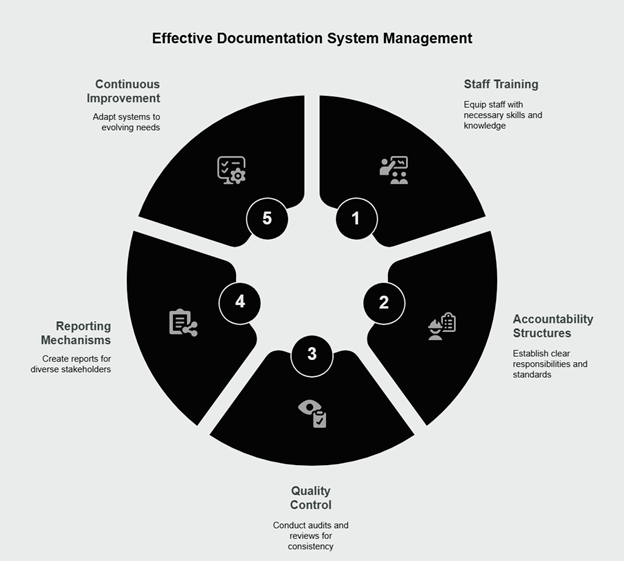
Even the most well-designed documentation system provides limited value without effective implementation throughout the organization. Successful implementation requires attention to people, processes, and organizational factors that support consistent documentation practices.
Staff training represents a critical success factor. Property management professionals need clear understanding of documentation purposes and procedures. The most effective training approaches combine classroom instruction with field-based practice, allowing maintenance staff to apply documentation protocols in real conditions with expert guidance.
Creating documentation accountability structures significantly enhances compliance. These structures clearly define responsibilities, establish quality standards, and often incorporate documentation completion into performance expectations. Organizations that treat documentation as a fundamental responsibility rather than an administrative burden consistently achieve better compliance.
Quality control processes further enhance documentation value. These might include periodic documentation audits, field verification of reported conditions, or supervisor reviews of submitted information. Quality control helps identify gaps, correct inconsistencies, and continuously improve documentation approaches.
Developing reporting mechanisms for multiple stakeholders extends documentation value beyond immediate maintenance teams. Property owners, financial managers, and regulatory compliance teams all benefit from appropriately formatted information extracted from comprehensive documentation systems. Organizations that design reports addressing various stakeholder needs often find broader support for documentation initiatives.
Finally, continuous improvement processes help documentation systems evolve with changing organizational needs and technologies. Regular review cycles, user feedback mechanisms, and periodic system assessments help identify improvement opportunities and ensure systems continue delivering value as organizational needs change.
Conclusion
Effective documentation and monitoring systems transform brick pointing maintenance from reactive emergency responses to strategic asset management. By implementing standardized assessment protocols, consistent monitoring methodologies, and appropriate technology solutions, property professionals in the Bronx can extend building lifespans, optimize maintenance budgets, and protect valuable architectural assets.
The true value emerges not just in immediate maintenance improvements but in creating organizational knowledge that persists despite inevitable staff changes. Well-designed systems preserve critical information about building performance, contractor capabilities, and effective maintenance approaches that would otherwise be lost during personnel transitions.
As building maintenance professionals, consider evaluating your current documentation approaches against the frameworks outlined here. Where are the gaps? Which components could be strengthened? How might improved documentation transform your maintenance approach from reactive to strategic?
Frequently Asked Questions
Q: What resources are typically required to implement a comprehensive brick pointing documentation system?
A: Implementing an effective documentation system requires an initial investment in process development, technology tools, and staff training. Organizations should anticipate dedicating resources to developing standardized templates, potentially purchasing digital documentation tools, training maintenance staff, and establishing quality control processes. The level of investment varies based on organizational size and building portfolio complexity. Implementation timeframes and resource requirements differ significantly between organizations depending on existing systems, staff availability, and portfolio complexity. Many organizations find that this investment delivers returns through reduced emergency repairs and more efficient maintenance planning, though the timeframe for realizing these benefits varies considerably based on building conditions and maintenance cycles.
Q: How can we ensure documentation continuity when working with multiple contractors for brick pointing maintenance?
A: Maintaining documentation consistency across multiple contractors requires establishing clear standards and contractual requirements. Successful organizations develop detailed documentation specifications that become part of all maintenance contracts, including required formats, assessment methods, photographic standards, and submission timelines. Creating contractor onboarding processes that include training on your documentation system is essential. Many organizations implement a centralized documentation repository with controlled access for contractors, along with a quality review process for all submitted documentation. This approach ensures consistency while allowing for the operational flexibility of working with multiple service providers.
Q: What are the cross-departmental implications of implementing a new brick pointing monitoring system?
A: Implementing a new monitoring system affects multiple departments beyond maintenance teams. Facilities, finance, compliance, and operations departments all have stakes in the process. Finance departments need to understand how monitoring data will influence budget forecasting and asset valuation. Compliance teams must ensure the system captures required regulatory information. Operations departments need to coordinate monitoring activities with building usage. Successful implementation requires early engagement with all affected departments, clear communication about system benefits, and potentially forming cross-functional implementation teams. This collaborative approach prevents siloed implementation and ensures the system meets enterprise-wide requirements.
Frequently Unasked Questions
Q: How might improving brick pointing documentation affect our insurance premiums and coverage?
A: While organizations rarely consider insurance implications when developing maintenance documentation systems, comprehensive brick pointing records can significantly impact risk profiles. Some insurance providers offer premium reductions for buildings with documented preventative maintenance programs. More importantly, in the event of structural damage claims, detailed maintenance documentation can be crucial evidence of proper building care, potentially preventing claim denials based on "lack of maintenance" exclusions. Organizations should consider engaging their insurance providers during documentation system development to understand specific requirements that could optimize coverage terms and potentially reduce premiums. The actual impact on insurance costs varies widely depending on the provider, policy terms, building type, and location.
Q: What are the legal implications of discovering undocumented condition issues during new monitoring implementation?
A: A significant but rarely discussed concern when implementing enhanced monitoring systems is the discovery of previously unknown building envelope issues. This creates potential liability and disclosure questions that many organizations aren't prepared to address. Once conditions are documented, organizations may have legal obligations to address certain safety concerns, disclose known issues to tenants or buyers, or report conditions to regulatory authorities depending on severity. Organizations should develop a clear protocol for handling newly discovered issues before implementing enhanced monitoring, potentially including legal counsel in the planning process to define appropriate response requirements for different categories of findings.
Q: How do documentation systems impact organizational knowledge transfer during key personnel transitions?
A: Organizations typically underestimate how building maintenance knowledge walks out the door during staff transitions. Well-designed brick pointing documentation systems serve as critical institutional memory repositories, capturing not just condition data but maintenance decisions, contractor performance history, and material compatibility information. Organizations should explicitly design documentation systems with knowledge transfer in mind, creating structured repositories for maintenance decisions and their rationales, contractor evaluation notes, and performance observations. This approach transforms documentation from simple record-keeping into strategic knowledge management that preserves critical institutional wisdom despite inevitable personnel changes.
Disclaimer: This content is for informational purposes only and not intended as business advice. No business relationship is formed through this content. The information provided does not replace professional consultation. Please consult qualified business advisors for guidance specific to your organization's situation.
Preserve Your Building’s Value with Expert Brick Pointing Support
At City Suburb, we understand the long-term value of proactive maintenance. With decades of hands-on experience serving Queens, Brooklyn, Manhattan, and beyond, our masonry specialists help property managers turn documentation challenges into asset-preserving strategies. Whether you're building a new system or refining an existing one, our brick pointing services are designed to complement and reinforce your monitoring efforts — delivering durable results and peace of mind.
👉 Contact us today to discuss how our team can support your documentation goals with expert brick repointing and long-term masonry care. Get in touch with us now →
“Great, quality work doing brick repointing.”
— William Wiedenbaum
💬 Have questions or want to learn more about building maintenance best practices?
We’re here to help. Our team offers guidance tailored to your property's needs — and we’re just a message away.
📲 Follow us for real-time updates, behind-the-scenes insights, and maintenance tips:

